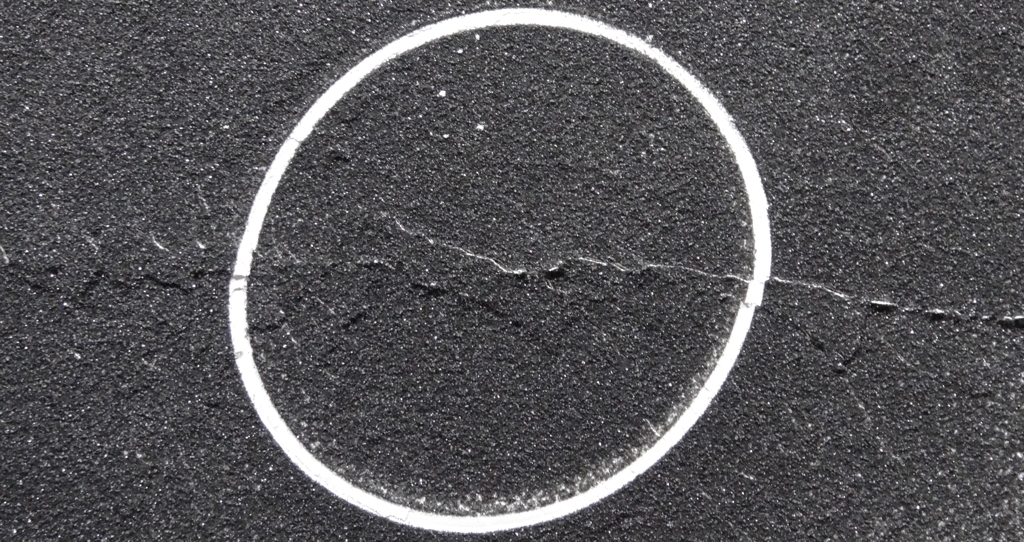
Physical model of deformation along a strike-slip fault. Photo by Vince Cronin.
Introductory Structural Geology, Deformation and Strain
Refer to Ben van der Pluijm and Steve Marshak, Processes in Structural Geology and Tectonics (psgt.earth.lsa.umich.edu), chapter 6, pages 137-160.
Terms you should work to understand and use properly
| angular shear (ψ) |
area strain (2D) |
coaxial strain |
deformation |
dilation |
displacement |
| distortion |
elastic (rheology) |
elongation (e) |
extension (e) |
finite strain |
gas (state of matter) |
| heterogeneous |
homogeneous |
infinitesimal strain |
inhomogeneous |
instantaneous strain |
internal angle of rotation (α) |
| liquid (state of matter) |
negative dilation |
negative rotation |
non-coaxial strain |
positive dilation |
positive rotation |
| principal strain |
pure shear |
quadratic elongation (λ) |
rigid |
rotation |
S1 axis |
| SH1 axis |
S2 axis |
SH2 axis |
S3 axis |
shear strain (γ) |
shortening |
| simple shear |
solid (state of matter) |
strain ellipse (2D) |
strain ellipsoid (3D) |
stretch (S) |
stretching |
| translation |
viscous (rheology) |
volume strain (3D) |
- |
- |
- |
Some quantitative definitions
- angular shear (ψ — Greek small-case letter psi): the change in the angle between two lines that were originally perpendicular in the undeformed material
- shear strain (γ — Greek small-case letter gamma): γ = tan[ψ]
- internal angle of rotation (α — Greek small-case letter alpha): the change in the angle between any two lines whose angular relationship in the undeformed material is known. If the two lines were originally perpendicular, α = ψ.
- elongation/extension (e): (final line length – original line length) / original line length
- stretch (S): S = 1 + e = (final line length / original line length)
- quadratic elongation (λ — Greek small-case letter lambda): λ = (1 + e)2 = S2
Some study questions related to this chapter
- What geometric form represents strain (distortion) in 2 dimensions? (Hint: it is not a square or circle)
- What geometric form represents strain (distortion) in 3 dimensions? (Hint: it is not a cube or sphere)
- What are the basic elements of rigid-body deformation? (Hint: there are two of them)
- What are the basic elements of non-rigid-body deformation? (Hint: there are four of them)
- If a homogeneous-isotropic-elastic sphere is changed in shape to an ellipsoid due to the imposition of a differential stress, what sort of deformation has occurred?
- What conditions are necessary for homogeneous strain to occur?
- What is the difference between coaxial and non-coaxial strain?
- What is the difference between pure shear and simple shear?
- What is the formula for elongation (aka extension or 1D engineering strain) in terms of initial and final line lengths?
- What is the difference between infinitesimal and instantaneous strain?
- Does the recognition of translation and rotation require use of a reference frame that is internal to the strained volume or external to it?
- When the internal vorticity is zero, is the shear pure or simple?
- What is the difference between distortion and dilation? Contrast what would happen to the shape of a perfect sphere if it is distorted homogeneously, versus the result of it being dilated homogeneously.
- What is the equation for shear strain?
- If a homogeneous-isotropic-elastic sphere is changed in shape to an ellipsoid due to the imposition of a differential stress (assuming infinitesimal/instantaneous strain), which of the three principal stress axes (σ
1, σ
2, or σ
3, where σ
1 > σ
2 > σ
3) will be parallel to the S3 axis of the strain ellipsoid?
- What is an essential characteristic (or two) of a rigid material?
- How do we designate the longest axis of the strain ellipsoid?
- How do we designate the shorter axis of the horizontal strain ellipse (i.e., of the horizontal projection of the strain ellipsoid)?
If you have any questions or comments about this site or its contents, drop an email to the humble webmaster.
All of the original content of this website is © 2018 by Vincent S. Cronin

